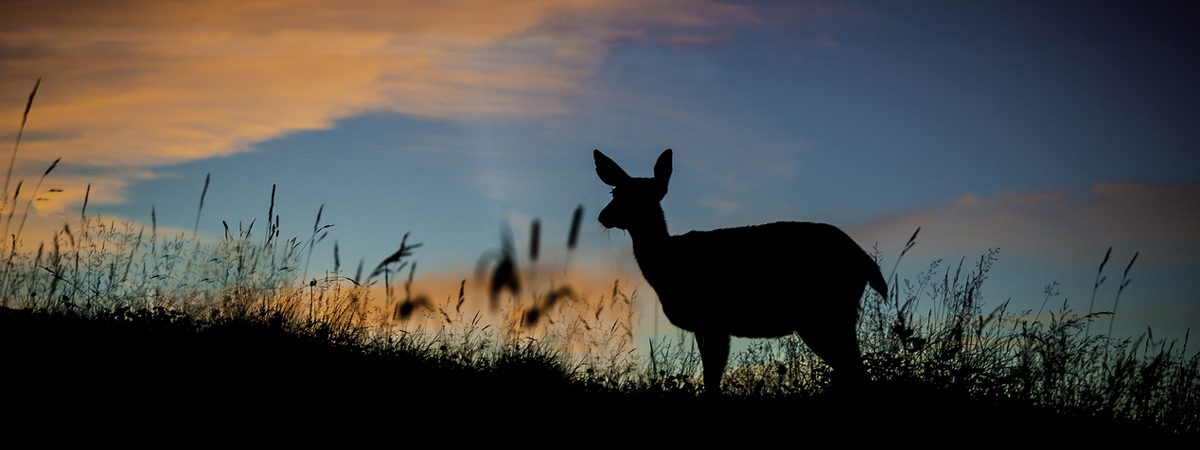
Tips for Cohabitating with the Wildlife Around Us
Posted by Devin Manky April 13, 2018
Happy Friday! For our last day of Wildlife Week we wanted to give you some tips and suggestions for the best way to cohabitate with the wildlife living around us. In Greater Vancouver we are blessed to live right next door to the wilds. This also means there is plenty of opportunity for the wilds to come into our yards and homes. Here are several ways you can help out the wildlife and also encourage them to remain wild - this is their best opportunity to thrive and survive.
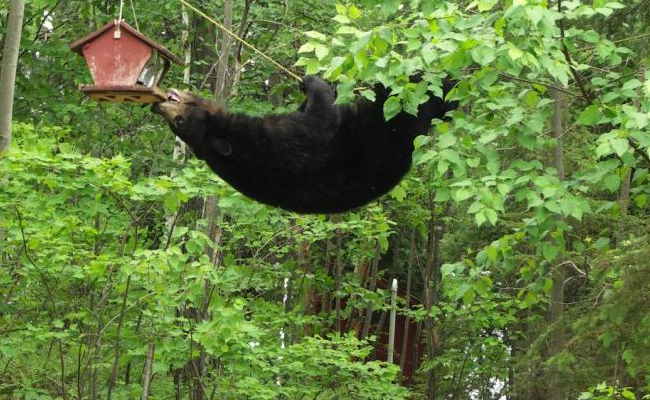
Bird watching is one of the largest past times around the world and having birds come to your yard is a great way to observe nature and also learn about some of the fascinating species that call BC home (or part time home!). Bird feeders are readily available at most hardware stores, department stores or specialty bird stores. They come in all shapes and sizes and some are specifically designed to attract certain species. Spending a bit of time at a specialty store or doing online research will help you determine which is right for you and your yard. There are also different seeds/nuts/suet that you can put out to attract different species. If you decide to feed birds at your house there are some good practices to follow to make sure the birds can feed safely and without injury. While it can be tempting to put bird feeders near windows so you can observe the birds from the comfort of your house, this also increases their chance of striking a window causing an injury of a fatality. So please place feeders well away from any windows. Also be sure to mount them where there are no easy branches or fences or fence posts that house cats, or other predators, can use as perches to attack the feeding birds. This also prevents squirrels from having easy access to raid your feeders. The best method of mounting is a pole dug into the ground somewhere on your property that is clear of other obstacles. If the pole is cemented into the ground it also provides bear proofing if you live in bear country - bears can be very ingenious when it comes to raiding feeders (see the photo above!). Please make sure to clean and refill your feeder often with a 1% bleach solution - this will kill any disease or bacteria that might be forming and prevent it from passing to other visiting birds.
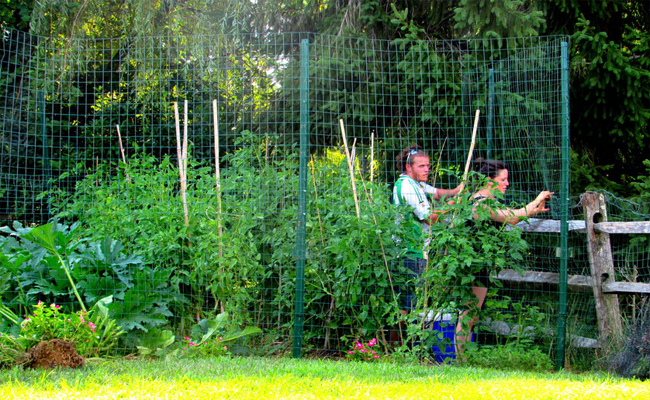
Instead of (or in addition to) maintaining a well placed bird feeder, you can also attract birds to your yard by planting native vegetation for both you and the birds to enjoy. The plant nurseries around town will have local species that are known attractants to hummingbirds, small fruit and seed eating birds. Planting a wide variety will increase your chances of seeing the birds find and enjoy them. Hummingbirds prefer bright coloured, deep cupped flowers that produce a lot of nectar. Robins, thrushes, sparrows, finches and others will enjoy small fruit or berry bushes. If you live near wooded areas and have local deer that wander by you will have to erect some sort of deer fencing as well to prevent the deer from raiding gardens - make sure it is high enough or they will just jump over!
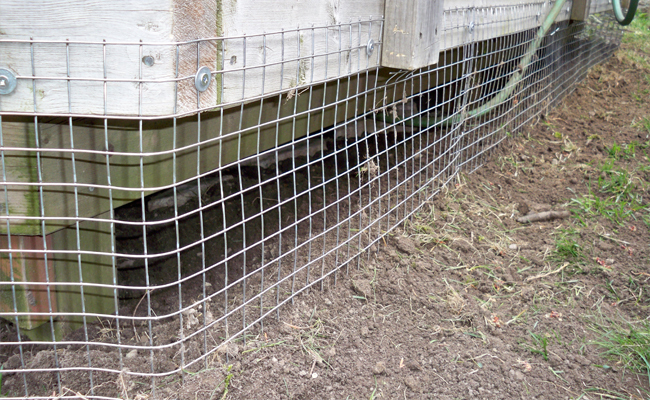
When wildlife moves into our homes then problems are sure to follow. The wildlife can cause structural damage, can be noisy or smelly (skunks!), or cause risks such as exposure to feces or surprise encounters ending in bites, scratches or sprays (skunks!). It is best to prevent this from ever becoming an issue by wildlife proofing your houses and checking everything each spring before breeding season begins as most wildlife will begin looking for dens or nests in the springtime. Common places that are used by wildlife include under porches, unfinished basements, sheds and garages, attics and inside roofs with access under eaves etc. The best way to prevent access is to look for any openings that wildlife might use for access - bats can use small openings to roost in attics - and block off access using a wire hardware mesh available at any hardware store. Using a grid size of 1/2" or smaller will also prevent mice from entering as an added bonus! The hardware mesh can be cut to size using wire cutters and attached via screw and washer. If you are using the mesh to prevent access under decks or under your house it is a good idea to bury some of the mesh down into the ground with a bend out away from the house or deck. This will make sure that animals that are good at digging (skunks!) will not be able to simply dig under the mesh to gain entry. A helpful hint to evict any wildlife that might be currently dwelling there is to take a plastic ice cream bucket with a lid, put an old rag into it and fill it a quarter full of bleach or ammonia. The place the lid on top, puncture some nail holes in the lid and tape the lid down well with duct tape. This will prevent the wildlife from accidentally getting into it. Place the bucket as close as you can to where the animal is living. The harsh smells evaporating out from the bucket will make their nest unappealing and they should move out on their own accord and you can then mesh over their access points.
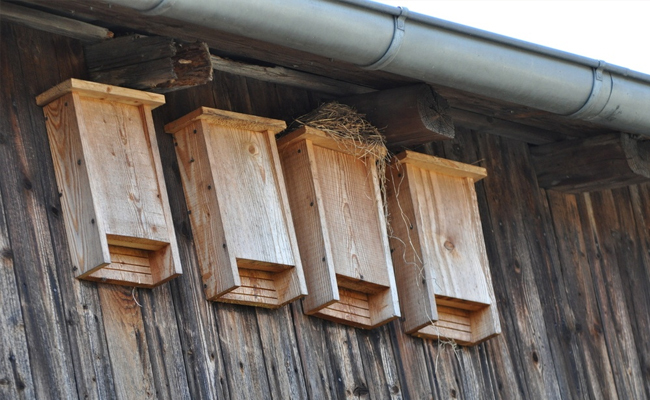
Bats are an often overlooked form of natural insect and pest control! A single Little Brown Bat (one of more common species here in Vancouver) can eat over a thousand mosquitoes in only one hour of foraging! So if you had a small colony living on your property they could be eating tens of thousands of mosquitoes each evening! See above for some tips on making sure bats do not nest in your attics (their guano (feces) can pile up quickly and be a health hazard). A better way to attract and house bats on your property is to build and install bat boxes. These structures are specifically designed to be an attractive daytime roost for bats. Each species uses a slightly different style of house so it's important to research which species you may have around and which ones you would like to attract. Many common bat box designs and blueprints can be found by doing a quick internet search - just be sure to also search by species. After you've decided on a design, it is a good plan to also read up and research the best places to install the bat boxes. As a general rule you want the bat box to have 6-8 hours of direct sunlight each day to provide warmth to the bats and as such an east or south facing wall is a good place to mount them. Placing them underneath eaves also allows for some weather protection. The boxes should also be at least 10 feet off the ground to be attractive to the bats. It can take a few seasons for the boxes to be noticed and used. You can watch below the boxes for signs of guano and to check quickly shine a flashlight into the boxes during the day to see if they are occupied. Please remember the bats are trying to sleep, however, and don't disturb them for long! It is definitely fascinating to watch them come out to forage each night!
